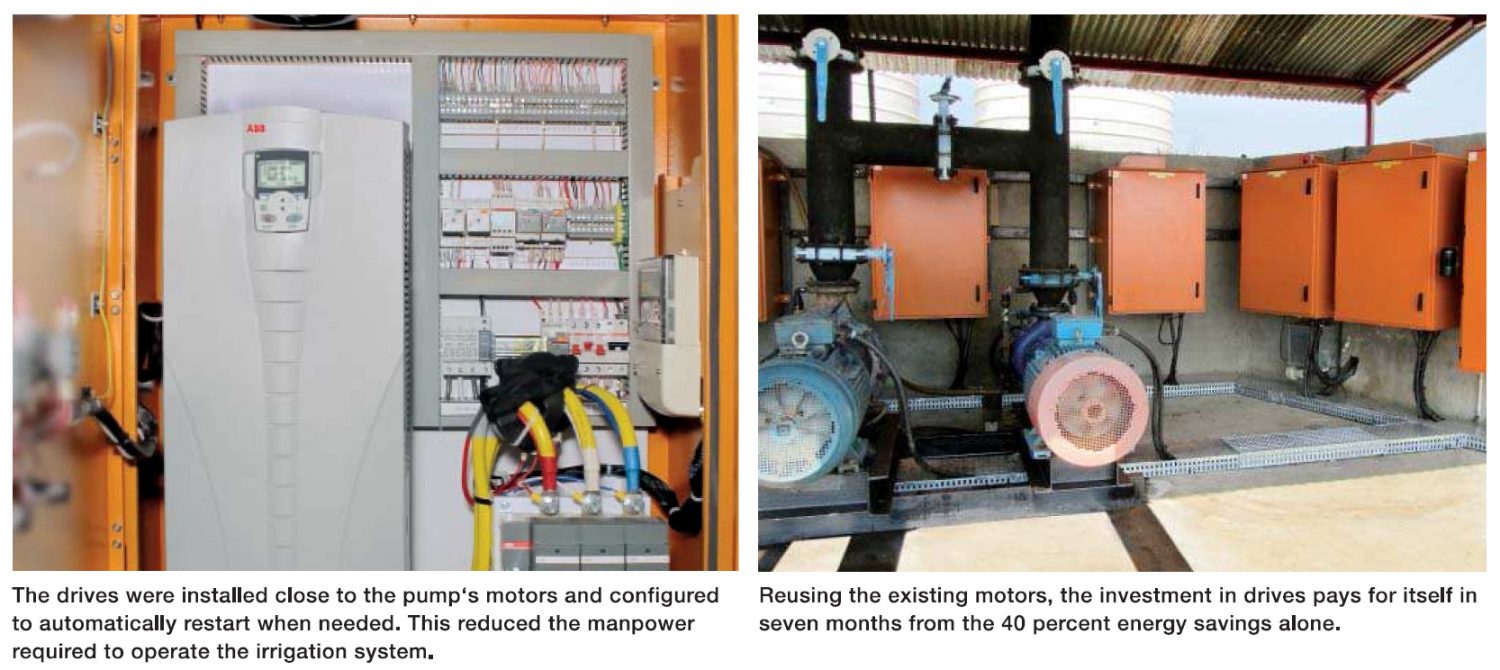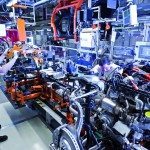Drives Save Labor And Reduce Energy Costs
Variable frequency drives save labor and reduce energy costs while extending the lifespan of equipment for industrial applications. In the following ABB case study, afarm owner began looking toralternatives to an old irrigation system, which worked by running the water pumps at constantspeed, with control than being done bymanual opening and closing of valves In the pipelines. The system still worked, but it wascertainly not energy efficient.In addition, the need tor manual opening and closing of valves during startup combined withfrequent power outages and voltage dips from the electrical utility, made the whole process varylabor-intensive. To start one of the six pumping stations could take one person up to an hour andwith sometimes as many as three power outages a day, start ups became almost a full-time job.
The young owner of this farm was not previously a customer of ABB, but upon meetingwith ABB energy efficiency engineers, he decided to test variable frequency drives (VFD)on the water pumps at one of Its six pumping stations. ABB recommended a VFDand working witha system integrator, assisted in thedesign, installation and commissioning of five variable frequency drives running irrigation pumps with 45 to 75 kWmotors, and the sixth variable frequency drive used on the water transfer pump.The results were quite dramatic. With the new VFD installed, Riecor saw a significant drop inelectric energy. Demand from the irrigation system went from 291 kW, 308 kVA down to only 175kW, 186 k:VA. This amounted to 116 kW; an impressive 40 percent reduction in electric consumptionfor just one pumping station.
In financial terms, based on the local crop factor tor this region that Indicates the irrigationpumps would operate at 2,970 hours per year means an annual savings of $19,700 U.S.D. in electricitycosts. The payback time amounted to a short 7 months. The farm quickly made a repeat order and hasinstalled similar drives on a second pumping station
MajorBenefits
In addition to the financial savings on the electricity bill, the farm also had further operationalsavings in both labor hours and troubleshooting the initial start up process. Operators now only need to flicka switch to start, and in the eventof power interruptions the system wouldstart back up automatically at pre-set times.The variable frequency drivesgive a long ramp-up timethat allows for a very smooth pipe filling process, so the previous mechanical stresses on the pumpcouplings during start up were completely eliminated, together with fewer friction losses in thepipes. Additionally water hammering following switching off disappeared and fewer losses on theimpeller were seen due to these extended ramp-up and ramp-down times.
The ABB Energy Efficiency engineers who worked most closelyon the project, says that the Riecor Farming installation is a good example of how energyefficiency projects can also give additional benefits on the operational side.
Cost efficient retrofit
- 40 percent reduction in energy consumption gave rapid seven- month payback of investment
- Reduced labor costs, manpower needed for startup process is dramatically reduced
- Smoother operation and pipe filling, power drops handled easier, water hammer and system shockseliminated
To learn more about applications where drives save labor and reduce energy costs, or for additional information about ABB Drives, visit the ABB Website. For ABB variable frequency drive repair or replacement, contact Precision Electric, Inc.








